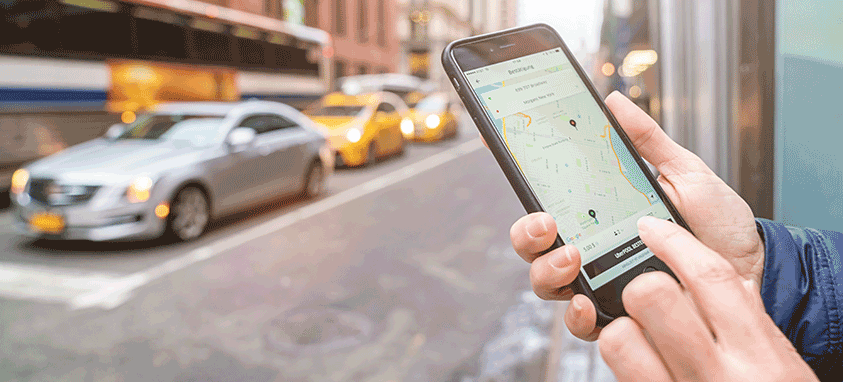On Friday, Transport for London announced London’s decision to ban Uber, claiming the company “demonstrates a lack of corporate responsibility in relation to a number of issues which have potential public safety and security implications.” And if history repeats itself, Uber will successfully stall the ban.
Dara Khosrowshahi, Uber’s CEO, responded with an apology and emphasized plans for change. Still, a history of unethical behavior cannot just be forgotten. Of course, Uber is an extremely useful tool while traveling and during events. Yet some skepticism still lingers among professional planners. Here’s why the situation isn’t so simple.
A Controversial Past
Although word of Uber’s questionable tactics has spread far and wide, the whole picture is often unclear. The spying programs, lawsuits, sexual harassment and discrimination claims have created an unsettling saga. We’ll lay out a few of the big major issues levied against the sharing economy king.
Let’s begin with Uber’s former CEO, Travis Kalanick, who was compelled to resign on June 21. Kalanick first received backlash in February 2014, when he made a sexist joke to an Esquire reporter that ended with the punchline, “We call that Boob-er.” Although there were many road bumps in-between, Kalanick was caught on camera yelling at his Uber driver in March 2017. This caused another typhoon of backlash.
The app has also been dubious when it comes to privacy. In November 2014, Uber’s “God View” technology was exposed. This means Uber had the technology to track the locations of its users. It came out that this power was being abused when a reporter complained that an Uber manager accessed her profile without permission. Adding to fears, it was revealed in December 2016 that the app had a tendency to frequently spy on exes, politicians and celebrities. Finally, work on a secret program called Hell, which allowed Uber to spy on its top competitor, Lyft, was leaked in April.
The most concerning objections involve Uber’s mistreatment of both its drivers and customers. After advertising false figures to drivers, Uber was forced to pay a $20 million settlement in January. Later that month, the #DeleteUber campaign popularized. The hashtag formed in response to skyrocketing surge prices during a taxi protest at a New York City airport (a demonstration against the Trump travel ban).
Just two months later, a highly publicized leak revealed that a top executive at Uber had hidden medical records of a woman who was sexually assaulted by an Uber driver. Eric Alexander, the executive, was fired. However, the woman still carried forth a lawsuit. She protested that the company violated her privacy and wrongly deprecated her allegation.
Once the madness accumulated to irreparable levels, Kalanick was forced to resign. In an effort to implement major improvements, U.S. Attorney General Eric Holder gave the company a lengthy list of provisions. The 47-step plan is based on an investigation into harassment, discrimination and retaliation.
The Uber Ban List
In the United States:
- Alaska
- Austin, Texas (due to city policies)
- Oregon (minus Portland)
Internationally:
- Australia (northern territories)
- Brno, Czech Republic
- Bulgaria
- China
- Denmark
- Hungary
- Italy
- Japan
- Taiwan
- Vancouver, British Columbia, Canada
The Planner’s Predicament
Evidently, it’s safe to say that Uber employs some questionable tactics—to say the least. Still, here’s why planners might have some trouble parting ways with the app.
No cash, no problem. It can be difficult to remember cash while on the road, especially when you have a million other things to remember. Plus, there’s no need to convert currencies when traveling abroad.
Availability and reliability. While there’s no guarantee Uber will be readily available at any given time, the chances are very high that it will—especially in a big city. Even when there’s a crowd, Uber has a supply of cars.
Fairly safe option. Barring some very rare incidents, the app has historically been safe. Since the car will pick you up from a chosen location, the risks of walking to, or waiting at, a bus stop are eliminated.
Time saver. Uber shows up pretty quickly. Aside from its speedy response time, both the amount of time to get to a location and for the car to arrive is evident to the passenger. Therefore, you can plan more efficiently.
In Conclusion
Lyft is perhaps the best alternative to Uber. It might not be as widely available as Uber, but the system is nearly identical and the prices are often comparable. In addition, Lyft runs more vigorous background checks on its drivers. Ultimately, the choice of whether or not to use Uber falls on the individual. If you’re currently debating where you stand, perhaps it’s best to wait and see. Even though Uber has failed to follow through in the past, perhaps it’s only fair to give the new CEO an opportunity to amend the app’s problematic history.




